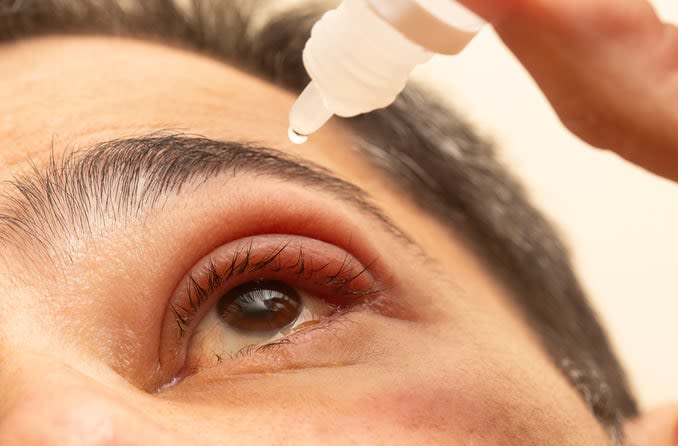Stye medicine, eye drops and ointments

Styes don’t always go away on their own. If you have a persistent stye (not to be confused with a chalazion), an eye care provider may prescribe medication to reduce swelling and discomfort and help your stye go away — eventually.
The duration of a stye can sometimes be shortened using a stye treatment recommended by your eye care provider or basic stye home remedy, such as applying a warm compress and putting a pause on wearing contact lenses. For stubborn or intrusive styes, an eye care provider may suggest one or more of the following medications:
Pain medicine
Common over-the-counter pain medicine — such as ibuprofen (Advil and Motrin), acetaminophen (Tylenol) and naproxen (Aleve) — can help relieve any pain or discomfort caused by a stye. Anti-inflammatory drugs can also reduce some of the swelling and redness along the eyelid.
Stye eye drops and ointments
Some drugstores and online retailers sell eye drops and ointments specially formulated to treat styes. Ointments are usually designed to be applied to the underside of the affected eyelid.
While drops will include ingredients to help with eye redness and irritation, stye ointments often include emollients to soften and hydrate the skin, improving comfort and providing a better environment for healing.
Antibiotic eye drops and ointments
Since a stye is a bacterial infection, the antibacterial properties of certain eye drops and ointments may help speed up the healing process. Eye drops are applied to the eye, while ointments are applied directly to the stye area.
Oral antibiotics
Antibiotic pills are the only oral stye medication that attack the infection inside the eyelid bump. Oral antibiotics may be prescribed if the infection inside the stye has spread to another area of the affected eye.
If you have old antibiotics in your medicine cabinet, don’t use them. A care provider will need to prescribe a specific antibiotic to best treat the bacteria in and around your stye.
Steroid injections
Doctors use steroid injections to help the body’s immune system fight off infection and illness, and a stye is no exception. In this case, a steroid shot is injected directly into the stye. Your eyelid may be numbed beforehand to help with any discomfort caused by the shot.
When medicine doesn’t help
If your stye worsens, begins to affect your vision or doesn’t go away with medicine, it may be time to discuss stye removal surgery with your eye care provider. If a stye gets too severe without being surgically drained, it can turn into an abscess — a more serious kind of infection.
It may be tempting, but you should never pop a stye. The bacteria released from a stye when popped can cause the infection to spread to your eye or a different part of your eyelid.
If you have persistent trouble with styes, schedule an appointment with your eye care provider to learn more about treatment, prevention and what causes styes to form.
Typically, styes are not contagious. However, it's still a good idea to wash your hands frequently and avoid touching your stye to eliminate any possibility of transferring the stye-causing bacteria to others.
SEE RELATED: Pink eye vs. stye
Page published on Tuesday, 17 May 2022






